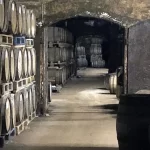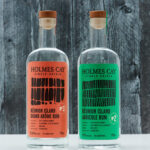Exploring the Hidden Depths of French Rum: Unveiling the Secrets of COFEPP and the Rum Landscape
One thing that became evident while writing Modern Caribbean Rum is the significant divide within the global rum industry. It’s not entirely surprising, considering that the largest rum producers primarily operate in three different languages: Spanish, French, and English. Details about Spanish heritage rum-making are predominantly communicated in Spanish, while the French rum industry is typically reported in French.
As a result, English-only speakers like myself often have significant blind spots when it comes to rums from other heritages. With that in mind, let’s delve into some aspects of French rum that many enthusiasts might not be aware of. This article has been extracted from the Rum Wonk magazine.
Within the enthusiast world, France is renowned for its rhum agricole, made from cane juice. Martinique and Guadeloupe’s agricole rums receive most of the attention given to French-made rum. However, rhum agricole hasn’t completely overshadowed molasses-based rhum traditionnel, also known as rhum industriel. In fact, French rum producers collectively make far more rum from molasses than from cane juice.
Surprised? Read on.
French Departments
Martinique, Guadeloupe, Réunion Island (in the Indian Ocean), and Guyane (aka French Guiana) are regions of France rather than independent nations. They hold the same legal status as regions within metropolitan France, such as Paris, Normandy, or Burgundy. It’s akin to Hawaii being fully part of the US, despite being thousands of kilometers from the US mainland. These four French territories are referred to as departments. (Marie-Galante administratively falls within the department of Guadeloupe.)
In French legalese, the overseas departments are collectively referred to as départements d’outre-mer, often abbreviated as DOM. They are all subject to French regulations and national oversight of their sugar and rum industries, and that oversight is consistent across all of them.
The French Rum Market: Who Makes What?
While French rum is often synonymous with rhum agricole for most people, the combined output of France’s overseas territories is approximately 60% molasses-based rum and 40% cane juice rum.
Martinique and Guadeloupe produce roughly equal amounts of rum. However, while Martinique’s output heavily favors agricole, Guadeloupe produces approximately equal amounts of agricole and molasses-based rum.
Unbeknownst to many, Réunion Island is France’s largest rum-producing department, and 99.5% of its rum is made from molasses. The table below, based on French government data, shows the total output of the three territories by rum type. The data does not include Guyane, presumably due to the relatively small production from its single distillery.
While most agricole rum is used for premium, distillery-branded rums, a significant amount of molasses-based rum is sold in bulk and goes into blended commodity rums. Other quantities are used in premium brands like Isautier, Darboussier, and Rivière du Mât, which are not regularly imported into the US.
So, who exactly is responsible for producing and selling all this molasses-based rum? Much of the answer lies with France’s largest rum producer.
COFEPP
Despite being relatively unknown outside of France, one company dominates the French rum landscape: Compagnie Financière Européenne de Prises de Participation, known as COFEPP.
COFEPP is France’s second-largest spirit company, behind Pernod-Ricard. However, most people are familiar with COFEPP through its subsidiaries, Bardinet and La Martiniquaise. COFEPP also gained control of Marie Brizard in 2019, although French regulators were not entirely pleased with the acquisition.
COFEPP’s rum holdings encompass the largest percentage of rum production in Martinique, Guadeloupe, and Réunion. In fact, when COFEPP attempted to acquire its competitor Quartier Français Spiritueux in 2011, it caught the attention of the French Competition Authority. The deal was eventually approved, but COFEPP was required to sell certain assets, including Bellonie Bourdillon Successeurs (BBS), the owner of Martinique’s La Mauny distillery.
In Martinique, COFEPP owns the Saint-James and Depaz distilleries, as well as certain aspects of the Le Galion sugar factory and distillery.
In Guadeloupe, COFEPP owns three distilleries. Two of them, SIS Bonne Mère and Sucrerie Rhumerie de Marie-Galante, produce molasses-based rum and are the largest distilleries on the island. The third is Bellevue Marie-Galante, a major agricole rum distillery. COFEPP is also a shareholder in Guadeloupe’s two sugar factories.
On Réunion Island, COFEPP owns Rivière du Mât, the island’s largest distillery and likely France’s largest rum distillery, with an annual capacity of approximately nine million liters of pure alcohol.
COFEPP’s rum portfolio includes brands such as Saint-James, Depaz, Dillon, Bally, Bellevue, Rivière du Mât, Negrita, Old Nick, and Galion. It also owns Aguacana, a cachaça brand. The company’s non-rum portfolio includes Cutty Sark, Glen Moray, and numerous other alcoholic beverage brands.
In short, COFEPP has significantly larger rum operations than Spiribam, its closest competitor in the French rum industry. Spiribam owns brands like Rhum Clément, Rhum J.M, La Belle Cabresse (Guyane), Arcane (Mauritius), and St. Lucia Distillers.
Final Notes
The above information is excerpted from Chapter 16 (“French Overseas Departments”) of Modern Caribbean Rum. While it can be an interesting read on its own, it also serves as a prelude to a future story on rum-making in Réunion Island and the French equivalent of high-congener Jamaican rum. Stay tuned!
Please note that this article was originally published in Rum Wonk magazine.





